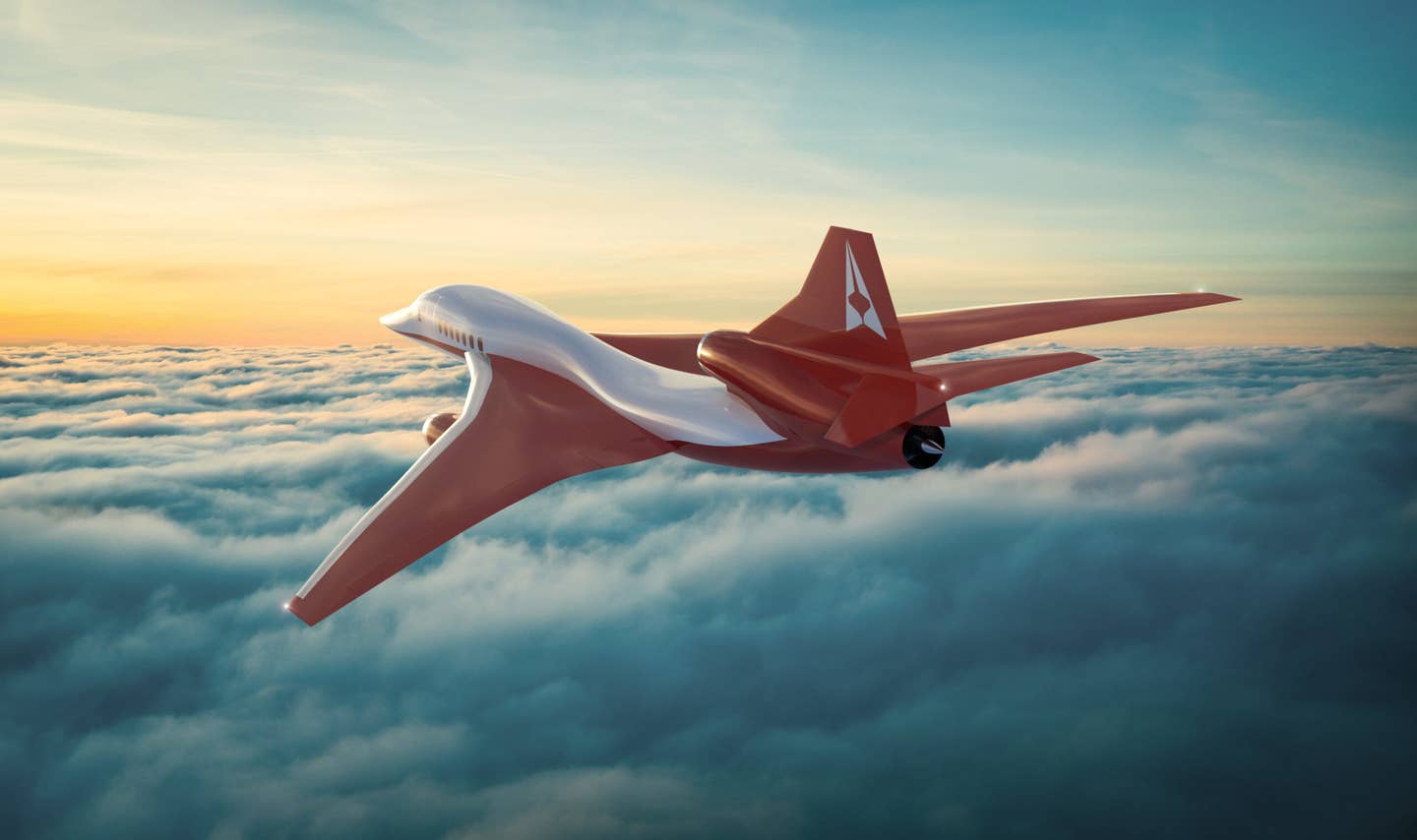Is Faster Always Better for Commercial Air Travel?
NASA and SpaceWorks are evaluating the technical and economic viability of supersonic and hypersonic commercial air travel.

Aerion Corporation’s vision for a supersonic business jet never came to fruition. [Courtesy: Aerion Corporation]
Rising aviation industry interest in supersonic and hypersonic aircraft is prompting NASA to evaluate the technological and economic viability of commercial high-speed passenger flight.
In other words: Is faster always better?
To try and answer that question, NASA has hired Atlanta-based SpaceWorks Enterprises to study the economic prospects, examining what the company describes as a “range of potential aircraft configurations that are representative of the systems currently planned for development by the aerospace industry.”
It comes during a busy time. In Denver, a 65- to 88-passenger supersonic jet is currently being developed by United Airlines-backed Boom Supersonic. In Texas, a Houston company called Venus just announced it’s working on a hypersonic space plane for 12 passengers. And U.S. Air Force-backed Hermeus is developing a hypersonic airplane that might have passenger applications in the coming decades.
“This is a great opportunity for us to continue to address some fundamental questions regarding the technical and economic viability of high-speed commercial air travel,” said SpaceWorks CEO Dr. John Olds in a released statement.
SpaceWorks aims to study the market to help NASA to gain a deeper understanding “of the potential public benefits that might exist here,” said the company’s CTO Dr. John Bradford in the release. “Our prior work on point-to-point flight has quantified the sensitivity of the return-on-investment of these systems and underscored the need to ‘right-size’ the aircraft to capture specific markets.”
Specifically, the company will evaluate “design drivers such as flight speed, operational range, passenger count, fuel type, ticket price, and fleet size. This work will leverage recent NASA investments in obtaining elastic market trends and identification of the most promising high-traffic routes between cities around the world.”
Technical Challenges
From a technical standpoint, achieving high speeds creates significant technological challenges, which helps to explain why piloted hypersonic vehicles have been limited to spacecraft and NASA’s rocket-powered experimental X-15.
Hypersonic speeds create extremely hot air flows around the aircraft. Mitigating air flow temperatures and other technological challenges will be critical to success. According to Lockheed Martin, these are the generally accepted ranges in four basic levels of high-speed flight:
- Subsonic = <610 mph
- Transonic = 610-915 mph
- Supersonic = 915-3,840 mph
- Hypersonic = 3,840+ mph
Economic Hurdles
From an economic perspective, a major initial gateway to success will be funding. In the early 2000s, Aerion Corporation’s plan to develop a 12-passenger supersonic business jet never came to fruition. The company folded in 2021 citing lack of funds.
Another economic hurdle that will have to be solved surrounds the cost of day-to-day operations.
Concorde
When talking about the economics of high-speed commercial airlines, it’s hard not to think about Concorde, built by Aérospatiale/BAC and in service from 1976 to 2003. A flight from London to New York typically burned about one ton of jet fuel per seat—helping to drive the average cost of a round trip ticket to about $12,000, according to the Smithsonian Air and Space Museum.
The high cost of development and operations, along with spiking fuel costs and a deadly 2003 crash, ultimately spelled the end for the historic jets.
“Concorde’s failure [or mitigated success] teaches us that market-orientation is crucial, and highly technological endeavors need to establish a strong feedback response system in order to be truly competitive faced with fierce competitors,” said a 2018 study by the European Commission.
Another major economic hamstring for Concorde: Its routes and speeds were severely limited when flying over land due to noise. Sonic booms may be a deal breaker for the future of high-speed flight, unless a technological solution can be found.
X-59
In fact, NASA has partnered with Lockheed Martin’s Skunk Works facility in Palmdale, California. These two aerospace giants are working on another challenge facing the success of commercial high-speed flight: sonic booms.
They’re now developing a low-noise supersonic test demonstrator called the X-59, which is expected to begin test flights sometime this year.
NASA says its goal is to “collect and provide data to regulators that may finally solve the sonic boom challenge and open the future to commercial supersonic flight over land, reducing flight times drastically.”
SpaceWorks says its experience has shown that “when you look at this problem from a commercial perspective, a faster or bigger aircraft is not always better,” as Bradford put it. “The challenge here is getting the capabilities of the aircraft right such that the economic return is maximized and design point is robust to external factors.”
“Better and faster technology is cool,” he said, “but the business case should drive the design.”

Subscribe to Our Newsletter
Get the latest FLYING stories delivered directly to your inbox






